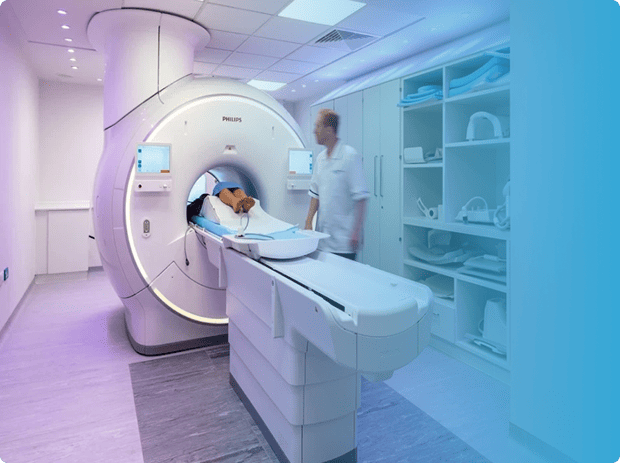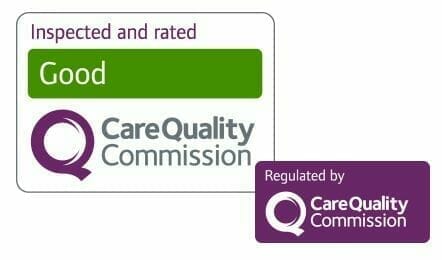Unveiling the Power of 3T MRI Scan: A Closer Look at its Benefits and Advantages

Unlocking the potential of medical imaging, 3T MRI is revolutionising the way doctors diagnose and treat their patients. With its unmatched power and precision, this advanced imaging technology is shedding new light on complex medical conditions. In this article, we will take a closer look at the benefits and advantages of 3T MRI.
Utilising a higher magnetic field strength than traditional MRI scanners, 3T MRI scans provides exceptional image quality and greater detail, enabling healthcare professionals to detect subtle abnormalities that may otherwise go unnoticed. This level of clarity is particularly significant in the diagnosis of conditions such as cancer, neurological disorders, and cardiovascular diseases.
One of the advantages of a 3T MRI scan is its remarkable speed. With faster acquisition times, patients spend less time inside the machine, reducing discomfort and anxiety. Furthermore, this efficiency allows doctors to perform more scans in a shorter amount of time, leading to increased patient throughput and improved accessibility to this cutting-edge technology.
By harnessing the power of 3T MRI, medical professionals can make more accurate diagnoses, offer targeted treatments, and ultimately enhance patient outcomes. Join us as we delve into the world of MRI 3T scan and explore its incredible benefits.
What is 3T MRI?
Magnetic Resonance Imaging (MRI) is a non-invasive medical imaging technique that uses a strong magnetic field and radio waves to generate detailed images of the body's internal structures. Traditional MRI scanners typically operate at 1.5 Tesla (T), which refers to the strength of the magnetic field. However, 3T scanners MRI utilise a higher magnetic field strength of 3 Tesla, resulting in several significant advantages over their traditional counterparts.
Advantages of 3T MRI over traditional MRI
Improved image quality with 3T MRI
The higher magnetic field strength of 3T MRI scanners provides exceptional image quality and greater detail compared to traditional MRI scanners. This increased clarity is particularly crucial for detecting subtle abnormalities that may otherwise go unnoticed. The enhanced image quality enables healthcare professionals to make more accurate diagnoses and develop targeted treatment plans for their patients.
Faster scan times with 3T MRI
One of the standout advantages of 3T MRI is its remarkable speed. With faster acquisition times, patients spend less time inside the machine, reducing discomfort and anxiety. Additionally, the efficiency of 3T MRI allows doctors to perform more scans in a shorter amount of time. This increased throughput not only improves patient accessibility to this cutting-edge technology but also streamlines the diagnostic process, leading to quicker treatment decisions.
Enhanced diagnostic capabilities of 3T MRI
By harnessing the power of 3T MRI, medical professionals can unlock a new level of diagnostic capabilities. The higher magnetic field strength enables the visualisation of smaller anatomical structures with greater precision. This enhanced level of detail is particularly beneficial in the diagnosis of conditions such as cancer, neurological disorders, and cardiovascular diseases, where even the slightest abnormalities can have a significant impact on patient outcomes.
Applications of 3T MRI in different medical specialities
The applications of 3T MRI extend across various medical specialities, allowing healthcare professionals to delve deeper into the complexities of their patients' conditions. Here are some notable examples:
Neurology: 3T MRI is widely used in neurology to evaluate and diagnose conditions such as brain tumours, multiple sclerosis, stroke, and epilepsy. The higher image resolution provided by 3T MRI enables neurologists to detect subtle changes in the brain, aiding in the accurate diagnosis and treatment planning for their patients.
Orthopaedics: In orthopaedics, 3T MRI plays a crucial role in evaluating musculoskeletal injuries and disorders. From assessing joint injuries to identifying ligament tears, 3T MRI provides orthopaedic specialists with detailed images, allowing for precise diagnosis and personalised treatment plans.
Cardiology: 3T MRI has emerged as a valuable tool in cardiology, enabling the assessment of cardiovascular diseases with exceptional accuracy. The higher spatial resolution and improved signal-to-noise ratio of 3T MRI contribute to better visualisation of the heart's structures and function, aiding in the diagnosis of conditions such as heart disease, congenital heart defects, and myocardial infarction.
Oncology: The advanced imaging capabilities of 3T MRI have proven to be invaluable in oncology. By providing detailed images of tumours and their surrounding tissues, 3T MRI assists oncologists in accurately staging cancers, planning radiation therapy, and monitoring treatment response.
Considerations before undergoing a 3T MRI scan
While 3T MRI offers numerous advantages, there are a few considerations patients should be aware of before undergoing a scan:
Metallic implants or devices: Some metallic implants, such as pacemakers, cochlear implants, and certain types of aneurysm clips, may be incompatible with the strong magnetic field of a 3T MRI scanner. It is important for patients to inform their healthcare providers about any metallic implants or devices they have to ensure their safety during the procedure.
Claustrophobia: MRI scanners, including 3T MRI machines, require the patient to lie inside a narrow tube-like structure. This confined space can be challenging for individuals with claustrophobia. Patients who experience claustrophobia may discuss their concerns with their healthcare providers, who can provide appropriate measures to help them feel more comfortable during the scan.
Allergies or kidney problems: In some cases, contrast agents may be used during a 3T MRI scan to enhance the visibility of certain structures or abnormalities. Patients with known allergies to contrast agents or those with kidney problems should inform their healthcare providers beforehand, as alternative imaging options may need to be considered.
3T MRI vs. other advanced imaging techniques
When compared to other advanced imaging techniques, such as PET-CT and CT scans, 3T MRI offers unique advantages. While each imaging modality has its strengths and applications, 3T MRI stands out in terms of its exceptional soft tissue contrast, absence of ionising radiation, and ability to provide functional and structural information in a single examination.
It is worth noting that the choice of imaging modality depends on various factors, including the specific medical condition being evaluated, the information required by the healthcare professional, and the patient's individual circumstances. In many cases, a multidisciplinary approach combining different imaging techniques is utilised to provide a comprehensive assessment of the patient's condition.
Cost and availability of 3T MRI
The cost and availability of 3T MRI may vary depending on the region and healthcare facility. While 3T MRI scanners are becoming more widely available, they are still more limited in number compared to traditional 1.5T MRI scanners. The higher cost of 3T MRI equipment and the need for specialised expertise contribute to the variation in availability.
It is advisable for patients to consult with their healthcare providers or insurance companies to determine the availability and cost implications of undergoing a 3T MRI scan.
Conclusion
The power of 3T MRI is transforming the field of medical imaging, providing healthcare professionals with unparalleled image quality, faster MRI scan time, and enhanced diagnostic capabilities. By harnessing this advanced technology, medical professionals can make more accurate diagnoses, offer targeted treatments, and ultimately improve patient outcomes. As 3T MRI continues to evolve and become more accessible, it holds tremendous promise for the future of medical imaging, unlocking new possibilities in the diagnosis and management of complex medical conditions.

Patient Friendly MRI Scan at UME Health
Our open MRI machine provides a more spacious and less enclosed environment, which can ease any feelings of anxiety or discomfort during the scan. We also allow a friend or family member to sit in the room with you during the scan, if that would make you more comfortable.
UME Group LLP. Registration number: OC333533. A Company Registered in England and Wales. Registered office: 17 Harley Street, London, W1G 9QH ©Copyright 2024 - UME Group LLP. Built and maintained by Dezign41 London


